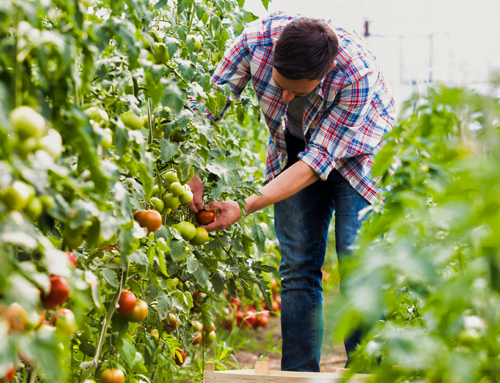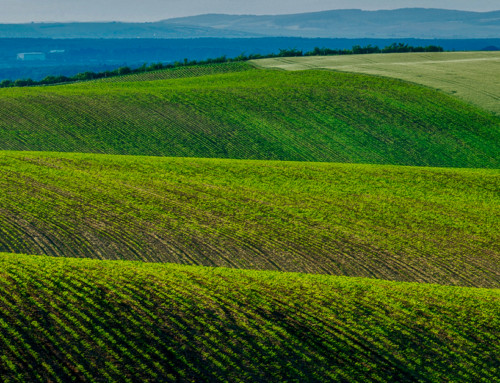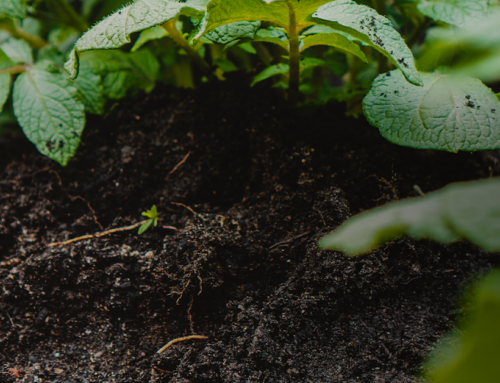The UN Food and Agriculture Organization (FAO) recently released a report addressing the importance of soil biodiversity. With today’s climate and environmental crisis, there has been a lot of discussion about the role of biodiversity and the need for its protection; however, the conversation almost always revolves around above-ground biodiversity, and rarely around the system below-ground.
More than 25% of all living species reside beneath our feet and these organisms are responsible for several processes related to food production, water purification, and carbon storage. According to the Status of the World’s Soil Resources report, the loss of soil biodiversity is considered to be one of the main global threats to the environment. The lack of knowledge about these organisms only intensifies this threat.
Prof Richard Bardgett, of the University of Manchester and lead author of the 2020 FAO report, said: “There is a vast reservoir of biodiversity living in the soil that is out of sight and is generally out of mind. But few things matter more to humans because we rely on the soil to produce food. There’s now pretty strong evidence that a large proportion of the Earth’s surface has been degraded as a result of human activities”.
Human-induced changes and natural disasters not only harm soil biodiversity but also affect the ecosystem’s functions and services. These changes include deforestation to make way for food and fibre production systems. Land-clearing is a major cause of land erosion and nutrient depletion which present a threat to soil health.
Yet, intensive agriculture continues to be one of the main sources of soil damage, since excessive use of fertilizers is responsible for the loss of soil microorganisms.
Soil biodiversity can provide ecosystem services in different fields, which have significant social, economic, health, and environmental implications. In agriculture, for example, soil organisms provide nutrients to plants which are essential for their development. They also reduce dependence on synthetic fertilizers and can be used in biocontrol measures to protect crops from pest. These organisms can also provide climate change adaptation and mitigation, as they have a direct role in the carbon cycle, helping soil store carbon.
How can we preserve the soil?
The importance of preserving the soil and its organisms has been made clear, but how can we do that? Above-ground biodiversity is familiar to most people, and its protection is safeguarded by laws and regulations. However, there is little effort being made to protect soil biodiversity. While raising awareness is the first step, ensuring sustainable agricultural practices around the world is what we need for a long-term resolution.
Replacing the usual potassium (K) fertilizers with a chloride-free source that contains a lower salt index, is already a viable practice that farmers can adopt to become more sustainable. Potassium fertilizers such as potassium chloride (KCl) lead to the accumulation of chloride (Clˉ) in the soil. This poses a big threat seeing that chloride has biocidal effects, harming organisms and causing soil biodiversity loss.
Despite its environmental impact, KCl is still the most used source of K in agriculture, because it has the highest rates of potassium. Potassium chloride’s impact on soil is a chronic problem. Therefore, only now, after decades of use, farmers are starting to see its negative effects on soil health. There are already chloride-free fertilizers in the market proven to be as efficient as KCl, with similar costs, and that do not harm soil biodiversity.
All farmers have to do is replace traditional K sources for a more sustainable one and reap the benefits. That is what the Chloride Free Foundation is trying to promote. We are working to raise awareness about this issue and hope to encourage a more sustainable way of farming through our certification.
Modern agriculture is a threat to soil health and according to FAO, 33% of the world’s soils are already degraded and by 2050 this number could reach over 90%, which shows how fragile soil can be. Therefore, the Chloride Free Foundation aims to create an incentive for farmers to use chloride-free potassium fertilizers. Thus, protecting soil biodiversity and safeguarding the ecosystem services for which they are responsible. E.g. increasing food security and helping us in our efforts to reverse climate change.
Below there are some other articles that you might be interested in:
- Soil Carbon Sequestration and its Relationship with Climate Change
- Soil Salinization: a Growing Threat to Our Natural Resources
- The Guardians of Soil: How can Farmers Protect Soil Biodiversity?








Leave A Comment